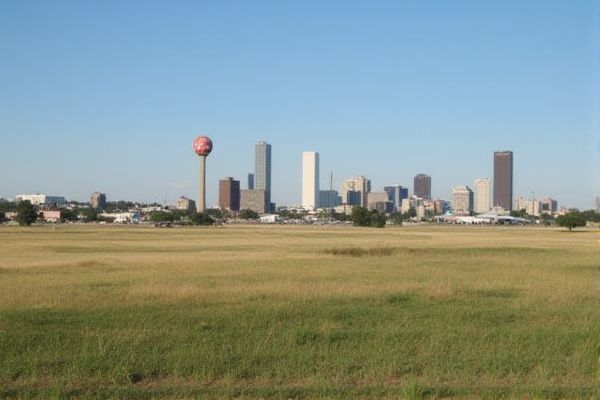
Safety and crime rates in Nebraska: Low violent crime rates statewide. Varying safety levels by city. Lincoln and Omaha have higher crime rates. Rural areas generally safer than urban. Property crime more prevalent than violent. Active neighborhood watch programs available. Community policing efforts ongoing. Reliable emergency services response times. Crime maps available online for research. University campuses implement robust safety measures.
Low violent crime rates statewide.
Nebraska has a lower-than-average violent crime rate, with 283 violent crimes per 100,000 residents, which is more than 26 percent lower than the overall U.S. rate. This significant difference highlights Nebraska as one of the safest states in the Midwest. For more detailed information, visit the SafeHome website.
Varying safety levels by city.
Nebraska's safety levels vary significantly by city, with the safest cities such as Schuyler, Holdrege, Seward, Norfolk, and Blair reporting low crime rates, including zero murders and fewer than 9 property crimes per 1,000 residents. In contrast, other areas may experience higher crime rates, as indicated by statewide and local crime statistics. For a detailed look at these statistics and more, you can visit the Safewise website, which provides comprehensive insights about safety rankings and factors influencing these differences across Nebraska's cities.
Lincoln and Omaha have higher crime rates.
Lincoln and Omaha, the largest cities in Nebraska, have higher crime rates compared to other areas in the state. Omaha has a higher crime index and a lower safety scale than Lincoln, with both cities experiencing more property and violent crimes due to their larger populations and increased foot traffic.
Rural areas generally safer than urban.
Rural areas in Nebraska are generally safer than urban areas, with lower crime rates. For example, property crime victimization rates are significantly higher in urban areas like Omaha and Lincoln compared to rural areas. This reflects a national trend where urban crime victimization rates exceed those in rural areas. For more detailed insights into the state's crime dynamics, visit the comprehensive article on Nebraska's Crime Rate.
Property crime more prevalent than violent.
In Nebraska, property crimes are more prevalent than violent crimes, with 20,469 property crimes reported in 2022, showcasing a 2.82% increase from the previous year. While violent crimes, such as robbery, aggravated assault, and murder, remain less common, they affect residents at a rate of 1 in 315. To gain more insights into these statistics and measures being taken, you can visit the Vivint website for comprehensive information on Nebraska's crime rate.
Active neighborhood watch programs available.
Active neighborhood watch programs in Nebraska can be found through the National Neighborhood Watch website, which allows users to search for watch programs by location, including cities and counties within the state. These programs involve cooperation between citizens and law enforcement to enhance community safety and reduce crime rates.
Community policing efforts ongoing.
The Nebraska State Patrol's Community Policing Services focus on problem identification and solving, working closely with schools, businesses, and organizations to reduce fatalities and prevent crime. They utilize tools like the Rollover Simulator and Distracted Driving Simulator to achieve these goals. To learn more about their initiatives, visit their Community Policing Safety Programs page.
Reliable emergency services response times.
In Nebraska, the assessment of EMS response and hospital arrival times varies significantly, with studies utilizing GIS mapping to evaluate these times. However, there is no unified data indicating a statewide average response time. Local variations and factors such as population density and resource availability play critical roles in influencing EMS response times. For a detailed exploration of this topic, you can refer to the research available through DigitalCommons@UNMC, which delves into these complexities and their implications on emergency services.
Crime maps available online for research.
For those interested in understanding crime dynamics in Nebraska, the state offers various resources that provide detailed insights into arrest and offense rates. On the Nebraska Commission on Law Enforcement and Criminal Justice's Arrest and Offense Rates County Map, users can explore interactive maps and tables that display crime statistics sourced from the US Census Bureau and local law enforcement. Additionally, platforms like Crime Grade present comprehensive crime maps, highlighting the rates per 1,000 residents, delineating the safest and most dangerous areas, and offering comparisons with other states. Furthermore, tools like CrimeMapping allow for customized alerts pertaining to crime and sex offender activity, ensuring that residents and interested parties receive real-time and localized information directly from participating law enforcement agencies.
University campuses implement robust safety measures.
University campuses in Nebraska implement robust safety measures, including extensive security camera networks, 24/7 safe walking services, regular alarm tests and emergency evacuation drills, and compliance with the Jeanne Clery Act to report and prevent campus crimes. Additionally, universities such as the University of Nebraska-Lincoln and University of Nebraska Omaha utilize advanced strategies such as Crime Prevention through Environmental Design, K-9 police units, and alert systems to enhance campus safety. For more information on these initiatives, visit the comprehensive resources provided by Campus Safety at Nebraska Wesleyan University.
